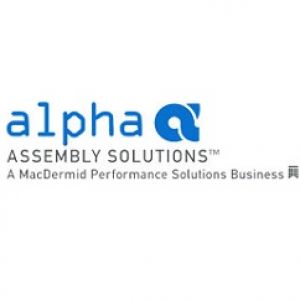Things to Know About Using Lead-Free Solder Paste
Posted by Alphaassembly on April 27th, 2017
Solder typically contains lead but, due to safety concerns, manufacturers of electronic products and devices are switching to lead-free solder pastes. Certain applications may require lead-free solder paste for PCB assembly in handheld electronic devices (i.e. tablets and smartphones), consumer electronics, automotive systems, military and medical equipment, network servers, and computer motherboards. Lead-free solder paste must be properly formulated to ensure high throughput and reliability for the intended application. Following are some of the most important things to keep in mind while selecting a Pb-free solder paste:
• Melting point - The main difference between lead-free and tin/lead solders is the temperatures needed to achieve an appropriate intermetallic bond. Lead- free solder pastes have a higher melting point than lead-based solders. The melting point of widely used lead-based alloys like Sn60/Pb40 is 183°C, and lead-free alloys like Sn96.5/Ag3/Cu0.5 (SAC 305) have a melting point of 217°C to 220°C. Higher melting points can affect the overall manufacturing performance.
• Reflow temperatures - Lead-free solders have higher melting points, so their reflow should occur over 240°C. The advised reflow or soldering profile must ensure a minimum time over 240°C while consider the temperature, which the equipment can tolerate. Likewise, various component and product sizes and mass must be considered, and reflow temperature limits must be established and monitored closely to prevent soldering problems.
• RoHS (Restriction of Hazardous Substances) and WEEE (Waste Electrical and Electronic Equipment) compliance - The use of tin/lead solder paste was widely practiced before RoHS and WEEE directives were implemented. It is important for the alloys used in lead-free solder paste to comply with those directives to ensure that electronic devices will still be reliable and perform as intended.
• The application – Manufacturers of lead-free solder paste can formulate it with your application in mind. For instance, one type of low-temperatures older paste is formulated to enable single reflow application for double-sided board assembly. Hence, it has superb no-solder drip, which typically occurs during reflow. The melting point of the paste is between 155°C to 190°C, and it eliminates selective wave soldering or extra wave for through-hole assembly.
About the Author:
Alpha Assembly Solutions Inc. is a premier company engaged in the development and manufacture of high quality electronics assembly materials. Since the year of its inception, way back in 1872, the company has played its role on the frontline of innovation, bringing many first-to-market products to the fore thereby, creating a premier niche for itself in the market.


